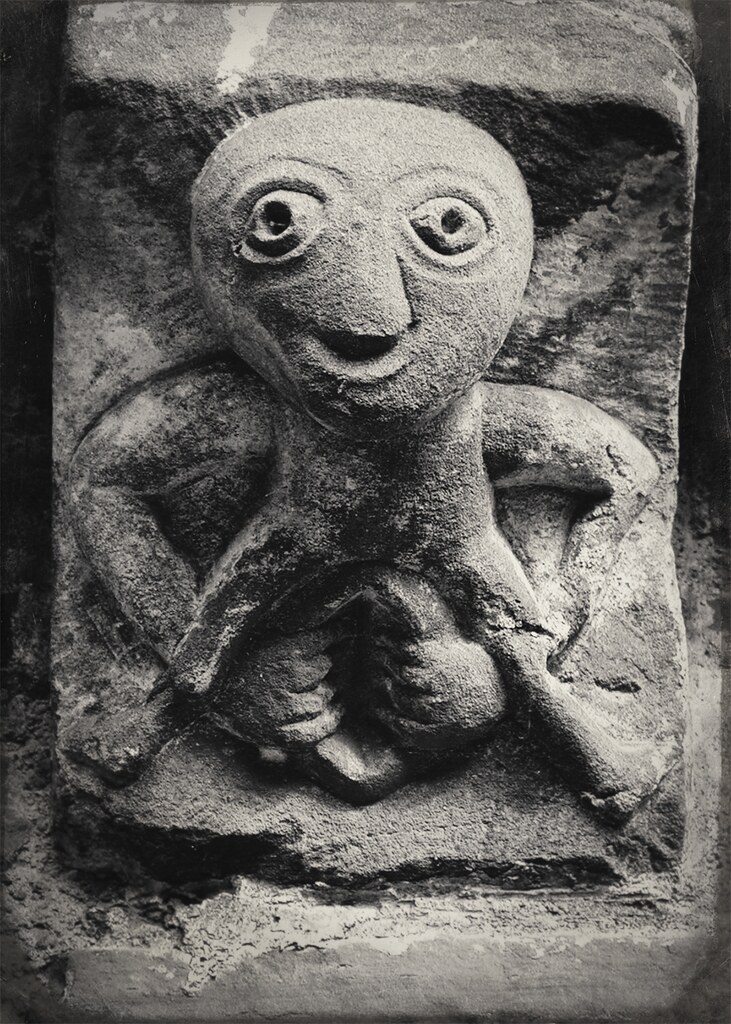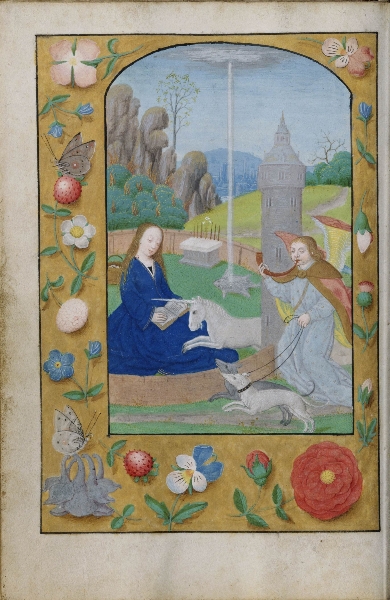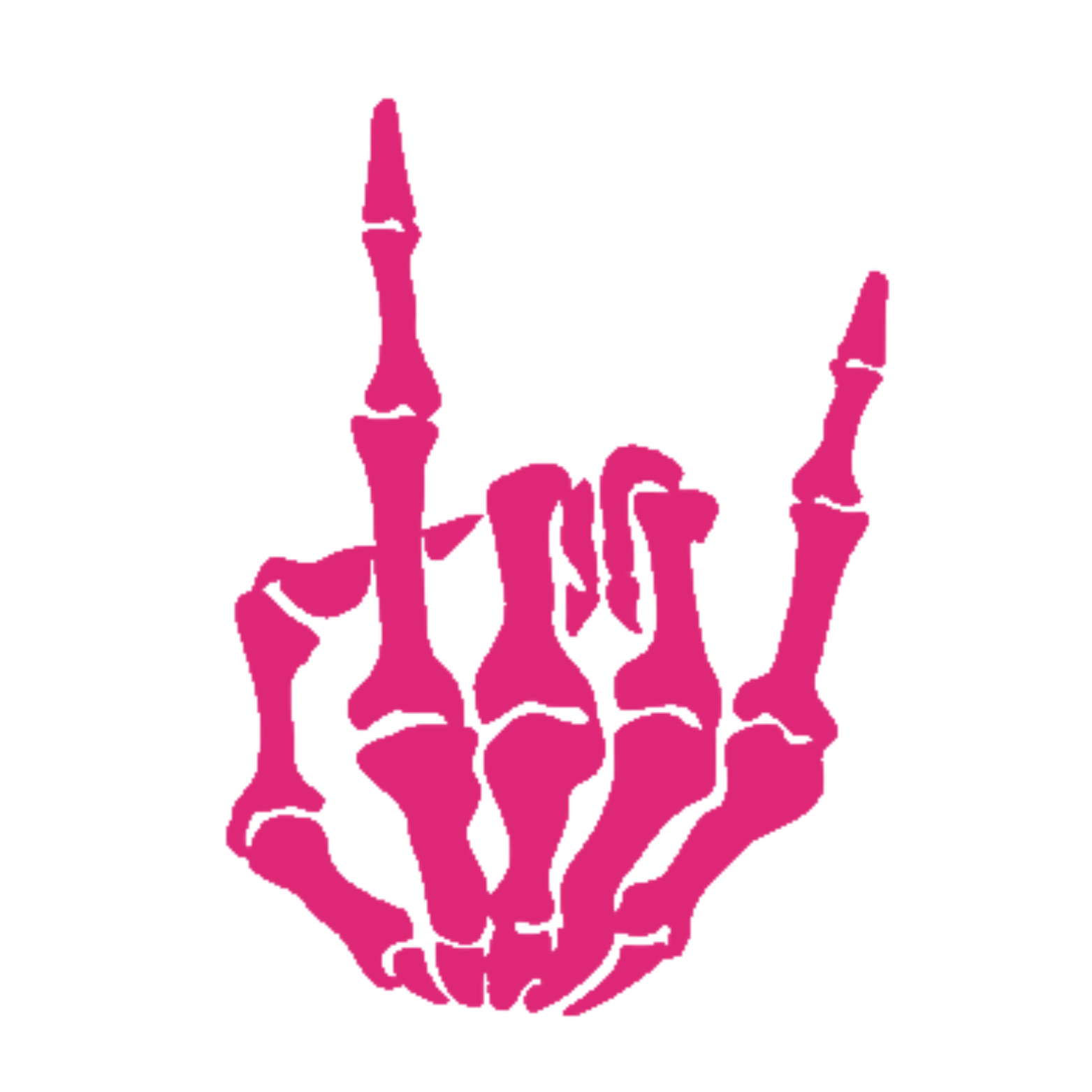Sheela Na Gig, the Virgin Mary, and Reproductive Justice
In May of 2022, I was getting ready to lead a Mother’s Day service at my church. I knew what my sermon was going to be about. It was going to be about Sheela Na Gig and the Virgin Mary.
I wanted to talk about this figure because I wanted to offer something of a counternarrative to the often-trite sentimentality of Mother’s Day. For me, the Sheela is a site where life and death intersect. I see her serving as both Mother and Crone. People with uteruses have, obviously, always been intimately involved with pregnancy and childbirth, but women have also traditionally cared for the sick, the dying, and the dead. And, in a universe where matter is neither created nor destroyed, creation is inextricably entwined with destruction. I wanted to talk about that.
I also wanted to talk about pregnancy and childbirth as physical experiences. One of the reasons I love Sheela Na Gig is because she invites us—compels us, really—to look at her body. Her vulva might seem exaggerated, but I suspect that anyone who has ever experienced vaginal birth will feel some truth in this hyperbole.

As an idea of womanhood, Sheela is the antithesis of another archetype, Mary, Mother of Jesus. The physical purity of Mary is so essential to her holiness that she not only becomes pregnant without experiencing sex, but she also must remain “ever virgin”—physically “intact” even after giving birth. Beyond that, she must be the product of “immaculate” conception so that she, herself, was born without the taint of original sin. Some theologians argue that Mary never experienced labor pains,1 because Genesis tells us that pain in childbearing is punishment for Eve’s sin—which, again, does not touch Mary. Medieval artists often depicted Mary within a walled garden—hortus conclusus—as a visual metaphor for her inviolate body. For me, this is also a metaphor for how theologians have tried to separate Mary from the physical reality of being human.
These were some of the thoughts I was working with as I was writing a sermon for Mother’s Day in May of 2022.

Then the Dobbs opinion leaked.
It has been brought to my attention that some of my co-congregants didn’t love hearing about abortion on Mother’s Day but, at that moment, I could not talk about motherhood without also talking about body autonomy and the freedom to not become a mother. And, as it turned out, Sheela Na Gig and the Virgin Mary were useful archetypes for talking about all of that.
When I look at the Kilpeck Sheela, I see an image of self-possession. This Sheela owns her body without apology. If you feel a sense of shame when you look at her, that shame is yours, not hers. Looking at Mary as Roe was falling, I thought about how Mary’s purity is used to shame women, how shame is used to discourage women from seeking an abortion, and how the idea that it’s shameful to have an abortion shapes attitudes around abortion—even among people who call themselves pro-choice.2
I thought about the words Tertullian—whom some regard as the founder of Western theology—wrote at the end of the second century of the common era. He exhorts women to remember that they are Eve, the author of “original sin.”
The sentence of God on this sex of yours lives on even in our times and so it is necessary that the guilt should live on, also. You are the devil’s gateway, you are the one who first plucked the fruit of the forbidden tree, you are the first who deserted the divine law; you are the one who persuaded him whom the devil was not strong enough to attack. All too easily you destroyed the image of God, man. Because of your desert—that is, death—even the Son of God had to die.
Tertullian’s phrase—“the devil’s gateway”—struck me to my core when I first encountered it. It felt like a visceral blow because I couldn’t help thinking of it in physical terms. It was not uncommon, in the nineteenth century especially, for scholars to see Sheelas as warning against lust; in this interpretation, a Sheela is a graphic depiction of what the devil’s gateway looks like, and a reminder of on whose body the devil’s gateway resides.
Notions of guilt and innocence have everything to do with how we think about abortion in this country, and how we legislate around it. An outright ban on abortion at any stage of pregnancy is predicated on the idea that a fertilized cell is a person. This is, of course, a view that is not shared by everyone, and which is almost certainly a minority view outside of a few Christian denominations. I think that, if we interrogate this view, we get at some important points about how we—as a society—award and withhold autonomy.
Dave Barnhart is a Methodist pastor. In 2018 he wrote something on Facebook that went viral and tends to resurface when people are talking about abortion. He is speaking to his fellow Christians, but I think his words have a broader relevance:
“The unborn” are a convenient group of people to advocate for. They never make demands of you; they are morally uncomplicated, unlike the incarcerated, addicted, or the chronically poor; they don’t resent your condescension or complain that you are not politically correct; unlike widows, they don’t ask you to question patriarchy; unlike orphans, they don’t need money, education, or childcare; unlike aliens, they don’t bring all that racial, cultural, and religious baggage that you dislike; they allow you to feel good about yourself without any work at creating or maintaining relationships; and when they are born, you can forget about them, because they cease to be unborn. It’s almost as if, by being born, they have died to you. You can love the unborn and advocate for them without substantially challenging your own wealth, power, or privilege, without re-imagining social structures, apologizing, or making reparations to anyone. They are, in short, the perfect people to love if you want to claim you love Jesus but actually dislike people who breathe.
On Mother’s Day 2022, I asked the assembled fellowship to reflect on what our principles would demand of us in a post-Roe world. I still have some thoughts about that, one thought being that I certainly have not fulfilled those demands myself. I closed with these words from Kathy Acker: “In my life politics don’t disappear but take place in my body.”
Croning is a reader-supported publication. To receive new posts and support this work, please consider becoming a paid subscriber.
Two years have passed since Dobbs dropped.
We’ve had some wins. In Michigan, we passed Prop 3, which made abortion a right guaranteed by our state constitution. Kansas passed a similar measure just before we did. Voters in California, Kentucky, Vermont, and Ohio have also approved of ballot initiatives to protect access to abortion in their states.
Advocates in Florida collected more than a million signatures and survived a legal challenge from the state’s attorney general to get abortion access on the ballot this year. Abortion is already legal in Maryland, and the effort to add this right to the state constitution is expected to pass. Efforts to protect abortion are underway in Arkansas, Colorado, Missouri, Montana, Nebraska, Nevada, and South Dakota. Just this month, the Supreme Court unanimously rejected an effort to restrict access to the abortion pill mifepristone—but their ruling left open the likelihood that there will be similar, better crafted lawsuits ahead.
Meanwhile, we have seen the devastating impact “let the states decide” has had on the lives of pregnant people. As of 2023, twenty-five states had moved to ban or limit abortion access. More than 25 million women between the ages of 15 and 44 lived in these states (source). Dobbs also exacerbated existing disparities. From the Kaiser Family Foundation:
With these state-level restrictions in place, people of color residing in those states may face disproportionately greater challenges accessing abortions due to longstanding underlying social and economic inequities, which could exacerbate existing disparities in maternal and infant health (source).
Over the past two years we have all read story after story after story about how post-Dobbs abortion restrictions have impacted and imperiled the lives of women. And we have learned that Republican assurances that they would not be coming for birth control or IVF were as disingenuous as we assumed.
So, what do we do? We keep working.
If you live in a state where abortion is on the ballot, volunteer with the organizations driving the initiative. For example:
You know how to google and you know where you live, so I’ll stop now.
Wherever you live, do what you can to get candidates who unambiguously support reproductive justice elected.
Support abortion access funds, whether that means offering your money or your time.
These are just a few suggestions. Surely you have your own ideas. I do want to close with a caveat, though: Look for organizations that are already working in this area and do what they ask you to do, even if what they ask you to do is tiresome and unexciting. Listen to people who know what kind of help is needed because they’ve spent years working in this space. Do not expect to be in charge. Do not expect that your opinions will be valued if they are based on nothing but your own personal experience. Turn your focus outward to what you are trying to achieve and be grateful for community.3
One of the women who partnered with me in creating that Mother’s Day service read this powerful poem, “Women vs. Ernie,” by Bridget Kriner. ↩
If it’s not obvious already, I am mostly talking to white ladies who are used to being centered and maybe even the boss. ↩


Comments ()